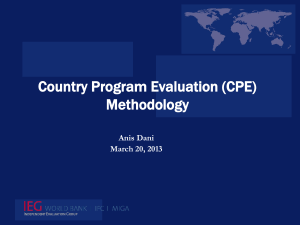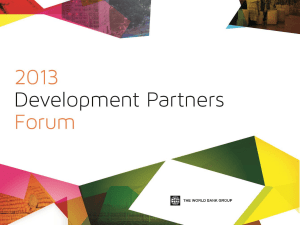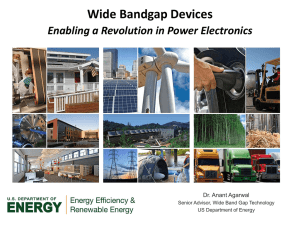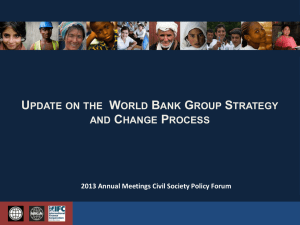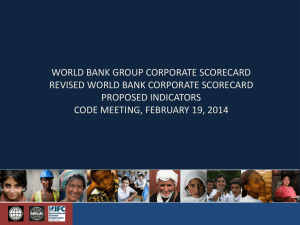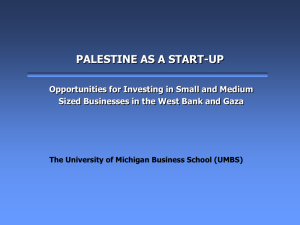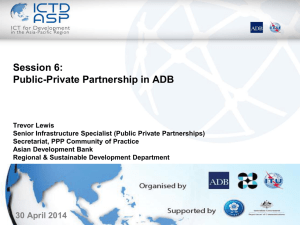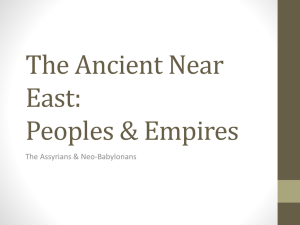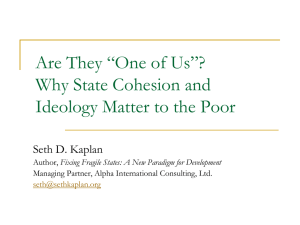Nepal Country Partnership Strategy FY 2014-2018
advertisement
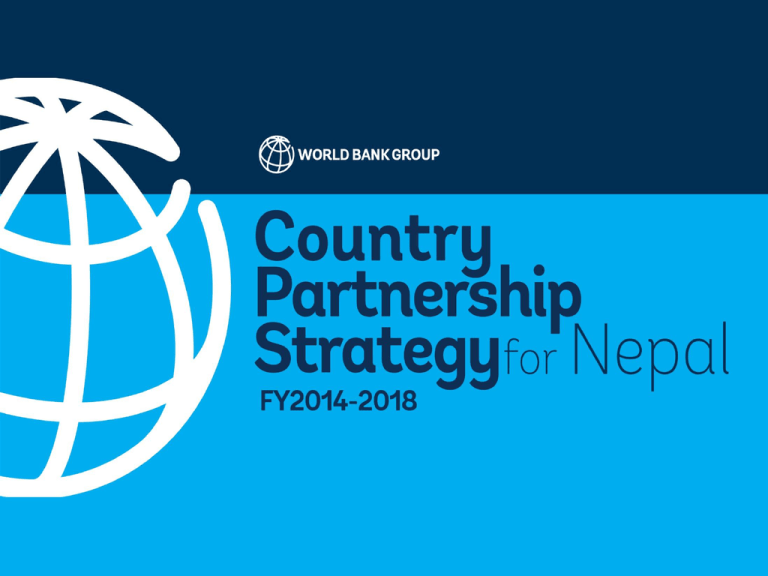
Nepal Country Partnership Strategy FY 2014-2018 The World Bank Group Nepal has made good progress on poverty reduction… …but vulnerability remains high, especially in rural areas Pockets of poverty are concentrated in the Western Hill regions Most of the poor are densely populated in the southern plains. Poverty reduction has been driven by remittances… …but reducing poverty further will require faster and more sustainable growth. Development Challenges and Opportunities Faster, inclusive and sustained economic growth Political stability/policy certainty as key prerequisite Poor infrastructure as major bottleneck – Energy – Transport Regulatory environment/financial sector stability Agriculture as source of growth and poverty reduction Opportunities: quality health/education and skills Governance and management of public expenditures WBG Country Partnership Strategy (FY14-18) Overall Objective: to support Nepal’s aspirations for increasing economic growth through increased investments in key sectors while providing support to make growth more inclusive and to help equalize opportunities across groups and communities. Pillar 1: Increasing economic growth and competitiveness Pillar 2: Increasing inclusive growth and opportunities for shared prosperity Outcome 1.1: Increased supply of electricity, including import, and improved access to reliable and affordable electricity within Nepal Outcome 2.1: Increased agricultural productivity and commercialization Outcome 1.2: Improved transportation connectivity, internally and with India Outcome 2.2: More equitable access to education and skills development, of higher quality and relevance Outcome 1.3: Improved environment for private sector investment, including increased financial sector stability Outcome 2.3: Improved health and nutrition services, particularly for the poor and disadvantaged Outcome 2.4: More efficient and transparent social safety net system WBG Country Partnership Strategy (FY14-18) Pillar 1: Removing the binding constraints to private investment and growth by focusing on energy, transport, the financial sector and the enabling business environment. Pillar 1: Increasing economic growth and competitiveness Outcome 1.1: Increased supply of electricity, including import, and improved access to reliable and affordable electricity within Nepal Outcome 1.2: Improved transportation connectivity, internally and with India Outcome 1.3: Improved environment for private sector investment, including increased financial sector stability WBG Country Partnership Strategy (FY14-18) Pillar 2: Increasing inclusive growth and providing historicallydisadvantaged Nepalis with opportunities to improve their resilience and increase their prosperity. Pillar 2: Increasing inclusive growth and opportunities for shared prosperity Outcome 2.1: Increased agricultural productivity and commercialization Outcome 2.2: More equitable access to education and skills development, of higher quality and relevance Outcome 2.3: Improved health and nutrition services, particularly for the poor and disadvantaged Outcome 2.4: More efficient and transparent social safety net system WBG Country Partnership Strategy (FY14-18) Cross-Cutting Dimensions Governance – Manage public expenditure efficiently and effectively – Improve public procurement – Strengthen demand-side / social accountability Gender Climate Change WBG Country Partnership Strategy (FY14-18) Implementation Financing – IDA: $200-300 million/year – IFC: $300-800 million in hydropower; $20-40 million financial institutions, manufacturing, agribusiness, services – MIGA: Potential for 1-2 risk guarantees Knowledge Partnerships Less Prior WBG Areas More Engagement Areas CPS Engagement Areas Level of Engagement Electricity Transportation Finance Agriculture Education/Skills Health/Nutrition/Sanitation Primary/Basic Education Peace and Reconstruction Urban Development Local Development Social Development Top Five Development Partners (size of commitments) WBG, Germany, ADB, China, India WBG, ADB, Japan, India, Switzerland WBG, UK, ADB, Norway, Germany ADB, WBG, UN, USAID, Switzerland, EU WBG, ADB, EU, Denmark, UN WBG, UK, USAID, Global Fund, Germany WBG, ADB, EU, Denmark, UN WBG, EU, UN, Denmark, Germany ADB, Germany, Japan, WBG, UN ADB, India, UK, WBG, Finland UN, USAID, Denmark, UK, Norway, WBG Thank you!! For further information please visit: www.worldbank.org/np www.ifc.org www.facebook.com/worldbanknepal
